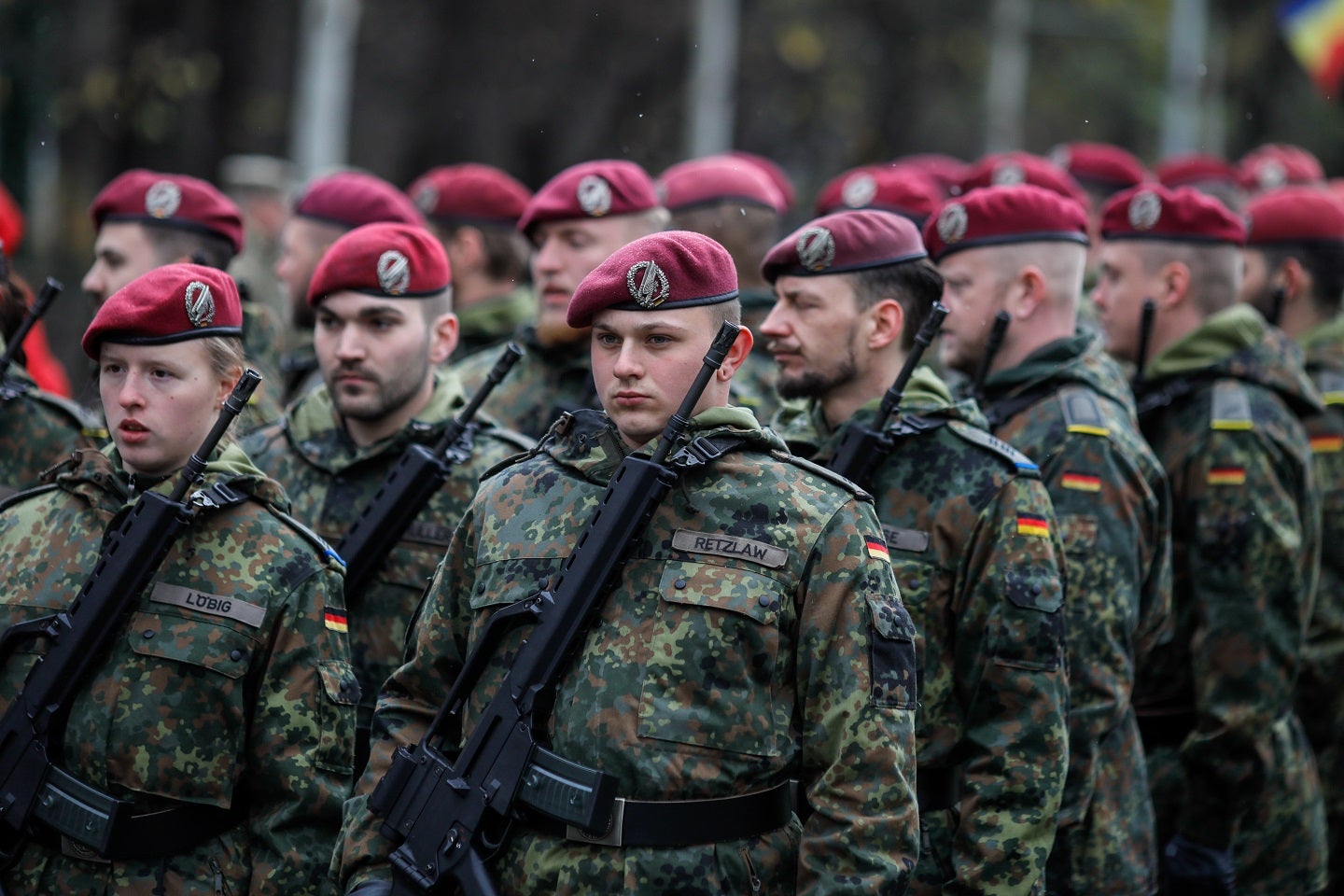
As Germany navigates economic struggles and geopolitical shifts, a commitment to NATO sees the nation investing $51.2bn (€46.5bn) to modernise its armed forces, reshaping defence capabilities across its Army, Air Force, and Navy.
Germany stands at a crossroads against economic uncertainties and geopolitical tensions, steering its defence strategy with an all-embracing approach to modernise the Army, Air Force, and Navy.
Navigating economic challenges
Germany’s defence budget for 2023, set at $51.2bn according to GlobalData’s “Germany Defence Market 2023-2028” report, grapples with the nation’s commitment to meet NATO’s defence spending targets, striving for 2% of GDP amid economic struggles.
Chancellor Scholz’s pledge to reach this goal by 2024 signals a proactive stance despite a forecasted contraction in GDP and supply chain disruptions.
A robust military modernisation plan
To fortify its military capabilities, Germany earmarks a special fund of €100bn ($105.3bn) based on insights from GlobalData. This plan addresses readiness deficiencies and ageing platforms, fuelled by the urgency to respond to evolving security dynamics, notably Russia’s actions in Ukraine.
The focus extends to advanced military assets, including Airbus A400M transports, Eurofighter Typhoon fighters, F35 fighters, and unmanned aerial vehicles.

US Tariffs are shifting - will you react or anticipate?
Don’t let policy changes catch you off guard. Stay proactive with real-time data and expert analysis.
By GlobalDataSector-specific investments
Sector-wise, Germany emphasises military fixed-wing, missiles, and tactical communication systems, as GlobalData’s German Defence Market report revealed. The cumulative value of $25.3bn in military fixed wing includes the NGF-Future Combat Air System programme.
Missiles and missile defence systems, valued at $14.9bn, feature programs like Taktisches Luftverteidigungssystem (TLVS). Tactical communication systems, with an $8.4bn valuation, focus on efficient command and control.
This year, Damen Shipyards Group has initiated the construction of Germany’s largest naval project, the F126 multi-purpose frigates. The first frigate is scheduled for delivery in 2027. In parallel, Germany has approved funds to acquire three additional P-8A Poseidon maritime patrol aircraft. The €1.1bn allocated for the P-8A Poseidons signifies an investment in naval reconnaissance.
Global alliances and challenges
Strategic alliances with France and active participation in NATO reinforce Germany’s commitment to European defence integration, aligning with insights from German defence intelligence from GlobalData.
Improved relations with the US, demonstrated by the decision to procure F-35s, signal collaborative efforts in addressing shared security concerns. However, the geopolitical scenario intertwines with domestic challenges, with Chancellor Scholz’s coalition government navigating crises like the war in Ukraine, the energy crisis, and rising inflation.
Safeguarding the digital frontier
As the threat of cyber attacks looms, Germany outlines a defence strategy against evolving threats in the digital realm. Implementing a zero-trust security model, accelerating cloud computing adoption, and investing in AI and ML reflect the nation’s vigilance in safeguarding against cyber threats.
Germany’s commitment to a robust defence posture unfolds against the complex tapestry of economic challenges, geopolitical uncertainties, and evolving security landscapes. The nation’s holistic approach to modernising its Army, Air Force, and Navy positions Germany as a player in shaping the security landscape of Europe and beyond.



